Millions have been invested in the emerging field of neurolaw. Where is it leading?
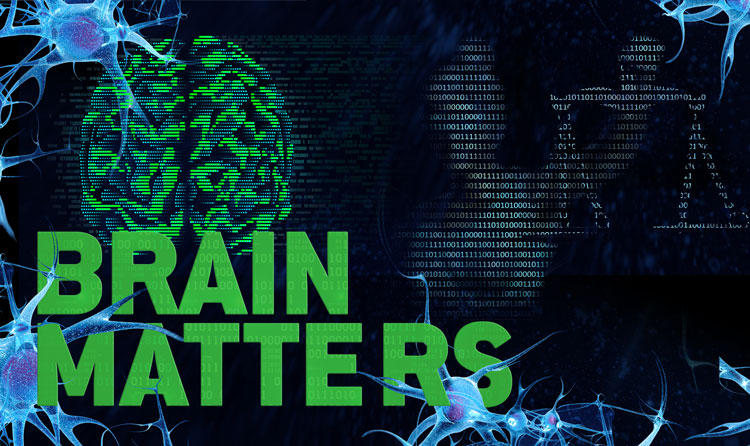
Photo Illustration by Sara Wadford/Shutterstock
Robert Hauser, a criminal defense attorney in suburban Chicago, was hired by a man charged with shooting his wife after she berated him for leaving a coffeepot on all day. After firing four shots from a revolver, Larry Lotz called 911 and told the dispatcher what he’d done. His wife, Karen, 59, died later at the hospital.
The criminal case against Lotz came down to two fundamental questions: Was he mentally stable when he shot her, and to what extent should he be held accountable under the law?
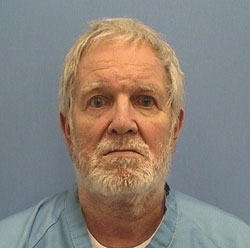
Larry Lotz. Photo courtesy of Illinois Department of Corrections
Lotz, a retired information technology professional and Vietnam vet who lived in Barrington, Illinois, was 65 years old at the time of his arrest in 2016. His friends and family could not believe Lotz would intentionally kill the woman he loved so dearly. Hauser says his client was not in his right mind, and he planned to argue that Lotz was temporarily insane, suffering from PTSD as well as showing early signs of Alzheimer’s disease.
“Why would someone shoot someone they adored?” Hauser asks. “You dig into the man’s background, and you can see no reason why. People thought it must be some kind of mistake. There had not been one instance of abuse in 40 years of marriage.”
Hauser says he consulted with expert witnesses, including a doctor who ordered a positron emitted tomography—or PET—scan to measure activity in Lotz’s brain. Hauser says the images showed signs of dysfunction and evidence of Alzheimer’s. That brain scan, Hauser reasoned, could support his insanity defense.
The case raised a host of legal questions both old and new: How do courts determine a person’s mental state and apply that in deciding guilt or innocence? How do judges and juries weigh evidence related to brain functioning? And what do lawyers and judges need to know to effectively evaluate such questions?
With a $4.85 million grant to Vanderbilt University in 2011, the Chicago-based MacArthur Foundation launched the Research Network on Law and Neuroscience with the mission to design and conduct brain-scanning experiments relevant to key topics in criminal justice, focusing on three themes: mental states, adolescent development and evidence. This funding amplified the foundation’s preliminary investment in an earlier exploratory initiative called the Law and Neuroscience Project.
“What’s going on in a person’s brain is relevant to so many domains of law,” says Owen Jones, director of the research network and the Glenn M. Weaver, M.D., and Mary Ellen Weaver Chair in Law, Brain and Behavior at Vanderbilt Law School.
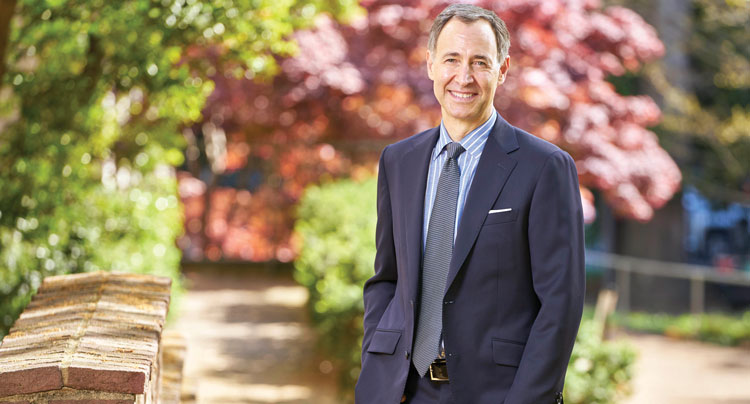
Owen Jones: “What’s going on in a person’s brain is relevant to so many domains of law.” Photo by Sandy Campbell Photography for Vanderbilt University
“Historically, there’s been no way to make those assessments,” Jones adds. “When you’re trying to understand the multiple causes of a person’s behavior, you want to try to understand what’s giving rise to their mental states.”
Between 2005 and 2015, there were more than 2,800 judicial opinions in which criminal defense lawyers used or cited neuroscience to help mitigate or explain their clients’ behavior, according to a review co-authored by Duke University law professor Nita Farahany and Stanford Law School professor Henry T. Greely.
Given this growing use of neuroscience, Laurie Garduque, director of criminal justice with the MacArthur Foundation, says the foundation wanted to take a deeper look at how neuroscience might have an impact on criminal law. “Part of the underpinnings of the network was to figure out what’s relevant to the rule of law and the practice of law,” she explains. “We felt that it was really important, given the impact of the criminal justice system on society.”
With MacArthur Foundation support ultimately reaching $7.6 million, the network—whose members include judges and academics in various fields—has produced scores of papers, books and articles, and it has hosted educational seminars around the country that have shed light on this burgeoning field known as neurolaw, Jones says.
Responsibility and culpability
The lawyer representing Lotz contended his client lacked the capacity to appreciate the criminality of his actions and suffered from a mental disease or defect at the time. “You could see there was something definitely wrong,” Hauser says.
His argument points to a crucial element of criminal law: The accused must have knowledge and intent to commit a crime to be considered responsible. But the law assigns varying degrees of culpability based on a person’s mental state—distinguishing whether a person acted intentionally, recklessly or even negligently. Such distinctions may be difficult for judges and juries to discern, which makes assigning guilt and punishment even trickier.
Among the studies designed by the MacArthur group was one examining whether brain scans could reveal when someone was acting knowledgeably or recklessly. Researchers from Yale University and Virginia Tech asked 40 study participants to imagine they were carrying a suitcase through a security checkpoint. In some cases, the participants were told the suitcase they were carrying contained contraband. Others did not know what was inside but knew there was a risk the suitcase might contain something illegal. They also were told they’d be financially rewarded for successfully sneaking in contraband but punished with a fine if caught.
The study participants made these choices while lying inside an fMRI (functional magnetic resonance imaging) scanner, which measures changes in blood flow and oxygenation in the brain. This allows researchers to see which areas are active at specific times. On the basis of the scan results, which were run through a machine-learning program, the researchers could predict which subjects knew they were carrying contraband through security (knowledgeably) and which were aware only of a risk (recklessly) when they carried the suitcase through.
The study, published in 2017, showed the researchers could identify certain patterns of brain activity associated with making knowledgeable choices about criminal activity as opposed to reckless ones. The findings lend scientific support to the law’s distinction between these two mental states, which determine how a person is charged and sentenced for a crime.
Although the initial study offers some insights, it’s much more difficult to assess knowledge or recklessness in the real world, says Gideon Yaffe, a professor of jurisprudence, of psychology and of philosophy at Yale Law School and one of the study’s authors.
“Fact-finders probably don’t make those distinctions as cleanly as they should, and they have very little by way of expert, useful advice about how various conditions, such as mental disorders, affect those boundaries,” Yaffe says. “You can’t always infer what their mental states are from their behavior when their mental states are shaped and conditioned by mental illness.”
How might such research translate in the criminal justice system? “There is a question of whether we have the right boxes, the right categories for responsibility,” Yaffe says. “And I think neuroscience can help us get confidence in the categories we have or reason to revise the categories we have.”
Scanning for memories
Lotz’s account of shooting his wife would be key in how attorneys would argue over his culpability. How accurate were his memories about the shooting, and was he telling the truth?
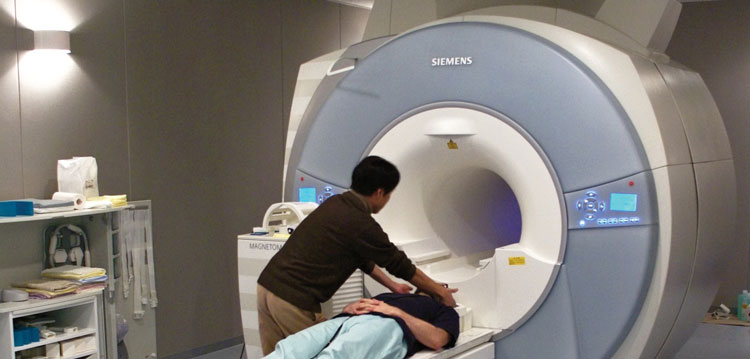
A patient prepares for an fMRI scan. Photo by Janne Moren;
Memory plays a vital part in the law, whether it relates to the reliability of eyewitness testimony or how defendants describe their state of mind. The MacArthur group has been investigating whether neuroscience can detect brain activity connected to memories—whether it’s possible to distinguish between real and false memories and between truth and deception.
While private companies have promoted fMRI technology for lie detection, and some lawyers have attempted to present it, courts have not admitted such evidence, noting the technology has not achieved general acceptance in the scientific community.
Anthony Wagner, a professor of psychology and neuroscience and director of the Memory Lab at Stanford University, was among members of the MacArthur group who reviewed the literature on fMRI lie detection. Although he concluded it’s not ready for the courtroom, Wagner and his colleagues have been investigating whether it’s possible through brain scanning to detect when someone is experiencing a memory, a concept that someday might serve as another way to determine truthfulness.
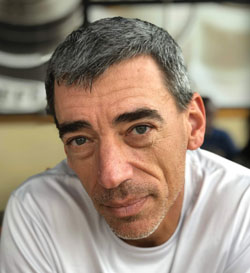
Anthony Wagner: “When someone has a false memory, the patterns are pretty similar to those of a true memory.” Photo courtesy of Anthony Wagner
Wagner’s team has demonstrated that brain scan data can be used to detect when someone is experiencing a memory while looking at photos of people or places they’ve seen before, compared with photos that are new to them. The algorithm they designed has been able to detect the presence of memories with 75%-95% accuracy.
In one study in 2016, Wagner recruited a group of Stanford students who wore digital cameras around their necks for three weeks, recording thousands of images as they walked around campus, went to class and went about their lives.
Afterward, the participants laid down in a scanner to view pictures, some collected from the cameras they wore and some from other students’ cameras. Using advanced statistical tools, the researchers found that certain patterns of brain activity could reveal whether the subject recognized photos from their past versus images from someone else’s camera. The machine-learning algorithms were correct more than 90% of the time. “They were remarkably accurate, higher than I was expecting for certain classifications,” Wagner says. He stresses, though, that “other classifications failed or were close to chance.”
While detecting the presence of memories from cooperative test subjects has proved possible, Wagner and his colleagues wanted to know whether someone could intentionally hide a memory. A 2015 study found that with some coaching, people could obscure brain patterns associated with memory, leading to a failure to detect the presence of actual memories.
The upshot is that fMRI-based memory detection has limitations. “When someone has a false memory, the patterns are pretty similar to those of a true memory,” Wagner says. “So in the lab, if people mistakenly believe they have seen a face before, the patterns are so similar to true memories that the ability to distinguish the two is barely above chance.”
Theoretically, lawyers or law enforcement officers might someday employ fMRI scanners while having defendants look at photos of crime scenes or crime victims to see whether they trigger brain activity associated with memories.
Wagner notes the research is still in its nascent stage, far from being used in legal settings. “I’m very cautious when it comes to application where the stakes really matter. In a legal setting, the freedom and liberty of a defendant might be at stake; similarly, reaching a just outcome for a victim is important, and it would be a travesty if unproven brain technology were to lead to an unjust outcome,” he says.
“In court, we are asked to remember complex events that occurred as individuals were navigating their lives. In the lab, memory is often examined in more controlled and very limited conditions.”
The juvenile brain
Although detecting memories and lies through brain scanning is still a long way from reaching the courtroom, neuroscience has offered a better understanding of the adolescent brain. The research has been used to support juvenile justice reform efforts, including raising the age at which children can be tried as adults and in determining the severity of sentencing them for murder convictions.
BJ Casey, a professor of psychology at Yale and a member of the MacArthur research group, is among the foremost experts on juvenile brain development. Her research was included in amicus briefs submitted to the U.S. Supreme Court to bolster arguments that the immature brains of juveniles are reason to exempt them from the death penalty (Roper v. Simmons, 2005) and mandatory life in prison (Graham v. Florida, 2010; and Miller v. Alabama, 2012). Although the court did not specifically cite neuroscientific research in its decisions, the justices did put an end to such penalties and sparked discussions about when a person should be considered an adult under the law.
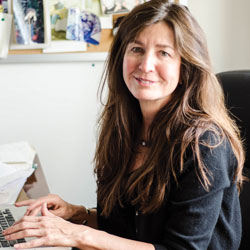
BJ Casey: “When you’re under threat and under stress, it’s like taking your whole prefrontal cortex offline.” Photo by Meredith Wright
The problem, Casey—who also serves as the director of Yale’s Fundamentals of the Adolescent Brain lab—argues, is that much of the discussion about brain maturity has been oversimplified. Brain development isn’t linear, and it involves many dynamic changes and variables that confound easy explanations of behavior, impulsivity and recklessness among young people.
For example, the conventional wisdom is that juveniles are reckless and impulsive because their brains are not fully developed, particularly the prefrontal cortex. But Casey has found that younger children don’t act as recklessly as adolescents, and that adolescents, even those around 12 to 13 years old, can be quite good at making decisions.
“It’s not like you magically have the brain of an adult on your 18th birthday,” Casey says. “The old model assumes that at age 18, we have full adult capacity. But what we show is that in emotional situations, young people—those 18 to 21— act more like teens in the activation in their brains and their performance than they do adults.”
Casey has spent years researching what triggers young people and young adults to make poor decisions. It turns out that stress and pressure are among the biggest factors. “When you’re under threat and under stress, it’s like taking your whole prefrontal cortex offline,” she says. “So you can imagine engaging in behaviors that you otherwise might not be engaged in.”
However, young people can make smart decisions in many situations.
“Individuals can have a lot of self-control, but in certain contexts, they don’t,” Casey says. That’s why “no one treatment or sentence fits all” in the criminal justice system.
That means judges must carefully weigh the options. “Young adults still should be held accountable. We may not want to put them in a juvenile facility, but we may want to consider that in terms of how they’re held accountable and how they get back into the community, because we’re still trying to set up their identity,” Casey says.
Spreading the word
Judges, lawyers and law students across the country have been learning more about the intersection of law and neuroscience in large part thanks to Francis Shen, a scholar, researcher and educator. He’s a professor at the University of Minnesota Law School, where he runs the Shen Neurolaw Lab and is executive director of education and outreach for the MacArthur Foundation Research Network on Law and Neuroscience.
Shen has been working with Jones to explain what neuroscience can and cannot do in the legal context.
“We’re not in the business of trying to sell our wares or to promote neuroscience in the courtroom but to focus on those things that are known and acknowledge those things that are unknown,” Shen says. “We try to engage in dialogue and open up a conversation about where this might be useful in your work. I think there’s been an increasing amount of interest. We also have presented things very cautiously, identifying the various flaws.”
Shen created his neurolaw lab to bridge science and law in a meaningful way and explore new ways of thinking. “If there’s one thing I’d like to do with my lab, it is to communicate with the legal community that the brain is really this important,” he says. “Every story is a brain story. If you get that far, then to me, all the questions that law asks get reshaped—in some form—as … brain [questions].”
The essence of neuroscience and law, Shen says, is that deep human interpersonal connections define us and define what we care about. “These are the things the legal system is ultimately protecting: protecting privacy, wanting to ensure safety and security and liberty,” he says.
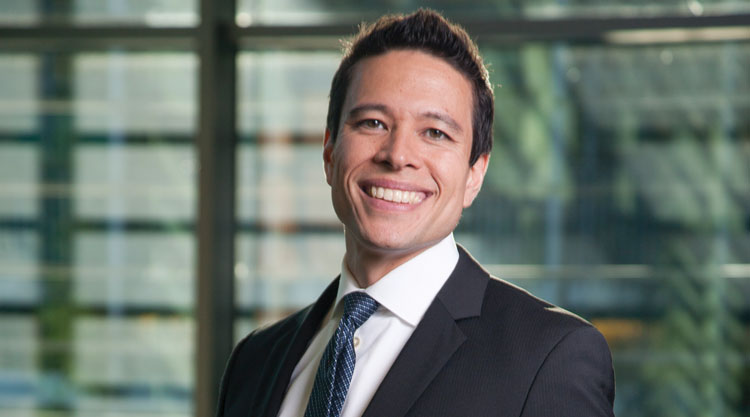
Francis Shen: “We have to show some victories to show that neuroscience matters to law in a meaningful way.” Photo by Zack Smith
In addition to teaching law at Minnesota and working with MacArthur, Shen is executive director of the Center for Law, Brain & Behavior at Massachusetts General Hospital in Boston, where he continues to promote the responsible and well-informed use of neuroscience. He believes such work can, and will, be relevant to lawyers. “It can play a role that aids justice and produces a better world for having considered neuroscience,” he says.
Progress and caution
One of the most challenging questions is how lawyers can responsibly use neuroscience in the courtroom. Scientists conduct studies using groups of people to measure phenomena, while trials are focused on individuals and their behavior. Can the results of a study that demonstrates, for example, people with brain injuries often lose impulse control be applied to one person? In many cases, they can’t, because not all people with brain injuries commit crimes.
“Our work tried to move away from focusing on individual defendants to try to find things that are more broadly true about the promise and limitations of this technology in understanding how human brains work,” Jones says.
Stephen Morse, a professor of law and of psychology and law in psychiatry at the University of Pennsylvania, has devoted considerable scholarship to the melding of law and neuroscience. Morse has been among the most renowned cautious voices in the field, arguing that neuroscientific research and imaging techniques are not poised to change the law in any significant way, and he is doubtful it can—at least in the near future.
“Neuroscience doesn’t answer life’s questions. Life’s questions are normative,” he says, adding that it’s highly unlikely any neuroscience finding would reach normative conclusions that would apply to the law.
Moreover, Morse says neuroscience hasn’t moved the needle much in offering legally relevant evidence about human behavior. He says lawyers should not make inferences about behavior that the science does not support. For example, mental disorders are not defined by brain scans but by observable behavior and clinical testing. “The problem is translation. Law is about reason-giving,” Morse says.
Still, Morse says he was impressed with the findings of the knowledge and recklessness study because it shows promise. “It made modest but serious progress,” he says. “We showed, as a proof of concept, that you might be able to find neuro correlates that would distinguish between two folk psychological states of mind, namely knowledge and recklessness.”
Shen is also encouraged by that study and echoes Morse’s caution. “We have to show some victories to show that neuroscience matters to law in a meaningful way,” Shen says. “If the claim is that advances in the understanding of our brain should lead to better outcomes in the law, then we have to show that it’s demonstrably true. As a field, we haven’t done that yet. The challenge is that neuroscience, in a lot of places, isn’t ready.”
Level of guilt
At Lotz’s murder trial, his state of mind was central to his defense. Dr. Geeta Bansal, a psychiatrist, testified that Lotz had post-traumatic stress disorder caused by childhood abuse and his service in Vietnam. She also said he had cognitive degeneration of his brain, a diagnosis that was bolstered by the images she found in a PET scan of his brain. Bansal concluded Lotz lacked the capacity to understand his actions at the time he shot his wife and fit the criteria for insanity.
Under cross-examination, however, Bansal noted that Lotz had the presence of mind to call 911, tell the dispatcher how many times he shot his wife and offer a detailed confession of the incident. Assistant State’s Attorney Scott Hoffert called Lotz’s insanity defense “ludicrous” and described the case as an intentional, deliberate act fueled by anger.
Lotz had waived a trial by jury, preferring the case rest in the hands of Lake County Circuit Judge Daniel Shanes. The judge rejected Lotz’s insanity defense, calling the killing of his wife an act of blind rage, and found him guilty of second-degree murder. Hanes, who said he considered Lotz’s mental health issues and remorse, sentenced him to 16 years in prison.
Although disappointed with the verdict, defense attorney Hauser says he hopes his client can receive the mental health treatment he needs. “I’m happy he was found guilty of second-degree murder. He will only serve 50% of the sentence, and with other credits, he should be released in approximately seven years,” Hauser says. “With the second-degree finding, his life is not over.”
Looking forward
While neuroscience did not play a central role in Lotz’s trial, the issues raised in his case will continue to fuel future research as lawyers, scholars and scientists seek to better understand the connections among our brains, behavior and mental states.
Jones says although great mysteries about the brain remain, neuroscience has opened a window that already is having an impact on the law and legal scholarship. “We’ve long been comfortable thinking that the brain’s operations are unknowable, but in fact, they’re increasingly knowable, and lawyers on both sides will often want to pay more attention to this because there can be information available that is relevant to our clients,” he says.
Lawyers interested in learning more can visit the network’s website, which offers a portal to research articles and online resources. Jones is one of the authors of the pioneering textbook Law and Neuroscience, the second edition of which is scheduled for publication this year. Law and neuroscience classes are taught in at least 20 schools, Jones says.
The ABA Section of Science & Technology Law has been watching these developments, and it partnered with the MacArthur Foundation to sponsor The Future of Law and Neuroscience conference in Chicago in 2013. Eric Drogin and Carol Williams, co-chairs of the section’s Committee on Behavioral and Neuroscience Law, agree that while the research is exciting, it’s far from solving age-old legal problems. “They’re not there yet,” Drogin says. “There is much to discuss, but at this point a lot of it is merely speculative.”
Jones agrees the science is not ready for the courtroom, but he believes the research has been valuable. “Despite all the progress that’s been made, it still feels very much like a frontier,” he says. “I think the lawyers that are coming up through training right now, some of whom will or will not be learning about this, at least will be entering a world in which it is considered entirely unshocking that brain evidence is being offered.”
Garduque believes the network has made great strides, notably its work on adolescent brain development and in educating the legal community about how neuroscience can be misunderstood and misused. “We’re quite proud of how it has helped and contributed to establishing a field,” she says. “There is still a great deal of work that needs to be done.”
This article appeared in the June/July 2020 issue of the ABA Journal under the headline: “Brain Matters: Millions have been invested in the emerging field of neurolaw. Where is it leading?.”



